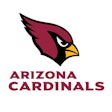![[Photo courtesy of S.R.Smith]](https://img.athleticbusiness.com/files/base/abmedia/all/image/2020/04/ab.spotlight420_feat.png?auto=format%2Ccompress&q=70&w=400)
When the Americans with Disabilities Act was expanded to include public pools, spas and recreational aquatics facilities in 2010, the intent of the regulation was to provide equal access to the water. And while it's important to maintain compliance and avoid running afoul of the regulations (which took effect in 2012), pool operators and facility managers would do well to keep their end-users top of mind when considering what having access to water means for their communities.
![[Photo courtesy of Aqua Creek]](https://img.athleticbusiness.com/files/base/abmedia/all/image/2020/04/ab.spot1.png?auto=format%2Ccompress&fit=max&q=70&w=400) [Photo courtesy of Aqua Creek]
[Photo courtesy of Aqua Creek]
As Bill Botten, training and technical assistance coordinator with the United States Access Board, puts it, accessibility provides aquatics facility patrons with more than just an opportunity to swim. "It's the place we go on the weekend or the evenings, or it's the opportunity to socialize with our family and friends, or be part of a swimming class, or to be a parent if your child's a part of this program," Botten says. "How does this great country incorporate people of all abilities into all aspects of life?"
Industry professionals managing aquatics facilities and leading manufacturers of aquatics accessibility equipment agree.
"Compliance is very important for the ADA, but maintaining compliance is important for the customer," says Elliot Ball, commercial product manager with pool deck equipment manufacturer S.R.Smith. "It's not just about avoiding fines or litigation — these things are done so that people can get use of the facility in the way it's intended."
Here's a look at how accessibility is affecting different recreational aquatics facilities:
 It's really cool when everybody is able to participate. It's a better world when we're all in it together and diverse and sharing.
It's really cool when everybody is able to participate. It's a better world when we're all in it together and diverse and sharing.
Missoula Family YMCA
"I'm busy from moment one 'til the time I leave," says Rose Kahane, aquatics director at the Missoula (Mont.) Family YMCA. "If you're all in, you've got to be 200 percent in, because you live and breathe the cause."
Kahane estimates that the Missoula Family Y serves about 7,000 members, ranging from young children to seniors. "We like to be a place that is really diverse and spans all ages and people of all backgrounds," she says.
Part of that diversity, of course, is providing access to the six-lane, 25-yard competition pool to people of all abilities. The Y chose to provide access and meet ADA compliance by installing a 500-pound capacity pool lift, which Kahane said was purchased around 15 years ago.
"I would say the chair lift gets use at least three times a week, if not more," she says. "We have some regular participants who come in, especially some people who come in to do water-walking or some of the aqua-fit classes that use the lift to get into the pool or get out of it. Sometimes, climbing up the pool stairs is the biggest challenge for some people."
RELATED: Find more solutions for your facility in the Buyers Guide
On Friday mornings, the pool hosts Adaptive Swim for students in Missoula County Public Schools who have special needs, either physical or intellectual. "Some of those participants, especially the ones with physical issues, utilize the lift and they would not otherwise be able to really get into the pool with ease," she says.
Whether they're wheelchair users, overweight or dealing with the effects of age, the Missoula Y's pool lift has helped members young and old gain access to the pool and improve their quality of life.
"I wish more people would explore the options that are out there for them, because of the wonderful things that water can do for you," Kahane says. "Whether it's to help you get in physical shape, or some therapy, or just have a moment to yourself — water is so emotionally therapeutic as well, and I just wish more people would realize that and check out the different opportunities available to them. And hopefully everyone, if they do have accessibility needs, will have good experiences and that if they don't that they'll speak up — because if you don't speak up then facilities won't change, and it's really cool when everybody is able to participate. It's a better world when we're all in it together and diverse and sharing."
![I think that's one thing that people fail to think about when they're supplying a lift. They kind of go with the bare minimum of ADA compliance, and all that does is limit them and their patrons. [Photo courtesy of Aqua Creek]](https://img.athleticbusiness.com/files/base/abmedia/all/image/2020/04/ab.spot3.png?auto=format%2Ccompress&fit=max&q=70&w=400) I think that's one thing that people fail to think about when they're supplying a lift. They kind of go with the bare minimum of ADA compliance, and all that does is limit them and their patrons. [Photo courtesy of Aqua Creek]
I think that's one thing that people fail to think about when they're supplying a lift. They kind of go with the bare minimum of ADA compliance, and all that does is limit them and their patrons. [Photo courtesy of Aqua Creek]
Tigard Tualatin Aquatic District
The Tigard Tualatin Aquatic District in Oregon is a unique partnership between two towns. Years ago, the Tigard and Tualatin pools, located about seven miles apart, were a part of the school district.
"The schools didn't have the money to keep the pools going, so they were proposing shutting them down," says Anthony Markey, the district's aquatics director. "Both communities rallied around both pools, and they made a special district."
One membership buys access to both facilities. At Tigard, which is celebrating its 50th anniversary this summer, members get access to a six-lane, 25-yard pool with a diving board, whereas the Tualatin pool offers an eight-lane pool.
"[Tualatin] is more competition, and people do more lap swims over there, and we have a good partnership with a pretty large swim team," says Markey. "We do offer a couple of programs like aqua aerobics and swim lessons and that kind of stuff over there, but with the temperature being closer to 82, 83, it's more used as a lap swim pool.
"Whereas [at Tigard], we keep our pool a little bit warmer. We get a lot more participants for our aqua aerobics class. We do a deep-water, an easy-paced and a senior fitness class, and our fitness class can get anywhere from 10 to 50 people in the class depending. The Tigard is definitely the busier pool of the two when it comes to usage."
RELATED: PRODUCT SPOTLIGHT 2020: Aquatic Components
The pools attract a wide range of ages, from a "Baby and Me" program for new parents and their children, all the way up to senior fitness. Markey says that, depending on the time of day, the facilities can be engaged in six or seven classes at a time.
With so much going on, it's important that members with accessibility needs be able to use the pool lifts — each pool has one — and be able to do so relatively easily.
"A majority of people figure it out on their own, but if they don't figure it out they can just ask," Markey says. "We don't try to hover, but we try to strike up a conversation, that way we can help if we need to.
"I think it's good customer service to do that, so that we're not assuming that they need that help."
Markey says that for some of his older patrons who need to use the lift, the pool is more than a place for exercise. "A lot of times, this might be the only form of communication people have with other people their entire day. This might be the only time that they talk."
![[Photo courtesy of Spectrum Aquatics]](https://img.athleticbusiness.com/files/base/abmedia/all/image/2020/04/ab.spot4.png?auto=format%2Ccompress&fit=max&q=70&w=400) [Photo courtesy of Spectrum Aquatics]
[Photo courtesy of Spectrum Aquatics]
'Go beyond'
The requirements dictated by the ADA are minimums, something that Botten says should be kept in mind. "The standards developed have a minimum set of requirements that only provide a minimum level of access," he says. "Go beyond."
One way to go beyond is to consider accessibility, even if your facility is not subject to the ADA and not required to have a pool lift.
"Just because you're not required to have it by the ADA doesn't mean your membership or your clientele doesn't deserve to have one," says S.R.Smith's Ball. "The reason that they should have a lift is because it allows their clients or their customers to actually guarantee entry into the pool."
Pool lifts, too, are required to meet minimum standards, but consideration should be given to purchasing lifts that are rated to exceed the bare minimum.
"I think one of the things that people forget about is they always go for the minimum ADA requirement for weight capacity, which is 300, and we're seeing a lot heavier patrons," says Bruce Giffin, national sales manager with Aqua Creek Products. "I don't mean that in a bad way, that's just kind of a trend. People are gaining more weight, so a heavier weight capacity can also help accommodate more people. I think that's one thing that people fail to think about when they're supplying a lift. They kind of go with the bare minimum of ADA compliance, and all that does is limit them and their patrons."
Finally, designers of new aquatics facilities would do well to consider the entire community — including those with accessibility needs — early on.
"Understand who you're trying to serve, make sure that you're serving all the populations," Botten says. "Get community buy-in. Make sure that the Wounded Warriors, or Disabled Vets, or Easter Seals or MS Society all get access to the design at an early stage, and that you have representatives from all these community-access groups that can help support the idea of what's really needed at this aquatics facility so that you're not only looking at what the minimum federal or state or local requirements are for everything that you're doing, but how you can make this place an inviting and an inclusive place for everybody. Build something that they can support for years to come."
"Aquatic exercise is some of the best exercise you can get," says Aqua Creek's Giffin. "You're a fraction of your weight in water, so it's less stressful on your knees. It's great for your cardiovascular system. It can be a life-altering experience, just having access to a pool."
Economics of accessAccording to the U.S. Census Bureau, more than 55 million people living in the United States — more than 19 percent of the population — are living with a disability. Add to that the fact that about 10,000 baby boomers are retiring every day, and it's easy to see why accessibility considerations are more important than ever for aquatics professionals. "They just think of people in wheelchairs," says Aqua Creek Products national sales director Bruce Giffin. "But you have an entire aging population, people who are retirement age or are getting to retirement age, baby boomers. I mean, that market is huge, and there are so many of them who have had replaced knees or hips or have arthritis, that having access to the pool can actually improve their lives immensely, as well." Those people control hundreds of millions of dollars, and whether they choose to spend it with one facility over another may depend not just on meeting bare-bones accessibility requirements, but also on how accessibility equipment is maintained and operated. Says S.R.Smith commercial product manager Elliot Ball, "If you're deciding between 10 different athletic clubs, and you are someone of significant or minor disability, you're definitely not going to pick the one that has an impedance to you getting into the pool." |
Understanding the ADAFacilities must comply with the ADA if they qualify as Title II public facilities (i.e., school districts, municipalities, cities or counties), or Title III private industry facilities (i.e., commercial facilities that provide public accommodation, such as hotels or recreation facilities). Pool facilities subject to the regulation must provide at least one accessible means of entry, though larger pools (exceeding 300 linear feet) must provide two. Either a pool lift or a sloped entry may be used and considered a "primary" means of access. Other means of entry include transfer walls, transfer systems or stairs. |
This article originally appeared in the April 2020 issue of Athletic Business with the title "More than the minimum Exceeding accessibility expectations in aquatics facilities." Athletic Business is a free magazine for professionals in the athletic, fitness and recreation industry. Click here to subscribe.

































